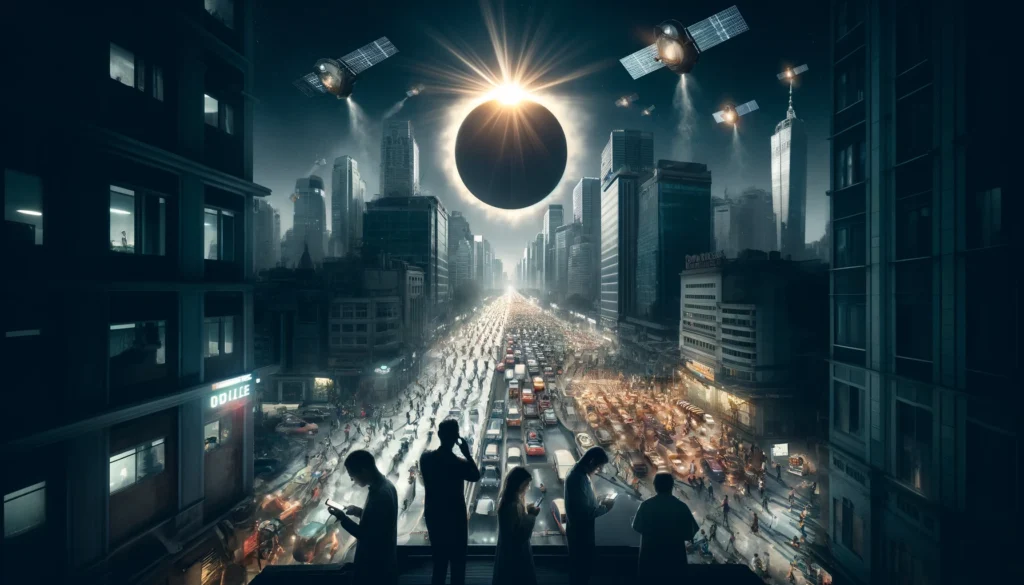As the celestial event of the year approaches, states along the path of totality for the April 8 total solar eclipse are bracing themselves for an astronomical influx of visitors. The spectacle, which promises moments of daytime darkness as the moon obscures the sun, has prompted a series of warnings from state officials concerning potential strains on infrastructure, particularly cellular networks.
The New York State Police, in collaboration with an array of state, local, and federal law enforcement, emergency, and transportation agencies, are leading the charge in preparing for what is anticipated to be a massive gathering of eclipse enthusiasts. Drawing on experiences from the 2017 solar eclipse, where certain regions saw their populations double in anticipation of the event, officials are sounding the alarm on the various challenges expected this year.
One of the primary concerns is the impact on cellular networks. With tens of thousands, if not hundreds of thousands, of people flocking to areas along the path of totality, the demand on cell service is expected to surge, potentially overwhelming the capacity of existing infrastructure. “Cellular networks may be overloaded by high volume,” reads a memo distributed as part of the eclipse planning effort. This could hamper communication, affect the deployment of emergency services, and overall disrupt the experience of those coming to witness the eclipse.
In response to these challenges, law enforcement and emergency management officials are offering a slew of recommendations to help visitors navigate the event safely and efficiently. Among the top tips is the advice to keep cell phones fully charged and to bring charging devices along. Given the risk of network overload, maintaining a charged phone could be crucial in emergencies or for navigation purposes.
Moreover, the authorities are advising attendees to plan ahead when it comes to travel and sustenance. This includes fueling up vehicles the day before the event to avoid gas shortages and carrying extra food and water. The advice is not just aimed at convenience but as a measure against the potential gridlock and delays in regions expecting unprecedented visitor numbers.
Electric vehicle (EV) owners are receiving specific warnings due to the risk of vehicles being stranded. “Stranded EVs will be towed,” the memo warns, highlighting the importance of ensuring that these vehicles are fully charged and capable of lasting the duration of the event without needing a recharge.
The path of totality for the April 8 eclipse stretches impressively across the United States, beginning in Texas at 1:27 p.m. CT and concluding in Maine at 3:35 p.m. ET. States directly in this path include Texas, Oklahoma, Arkansas, Missouri, Illinois, Indiana, Ohio, New York, Pennsylvania, Vermont, New Hampshire, and Maine, with parts of Kentucky, Michigan, and Tennessee also experiencing moments of darkness. The eclipse will offer up to 4 minutes and 27 seconds of total darkness, a phenomenon that will not only captivate but also challenge the regions it touches.
As excitement builds for this rare astronomical event, the emphasis on preparation underscores the balancing act between marveling at the wonders of the cosmos and navigating the earthly challenges that accompany such a gathering. Authorities continue to stress the importance of readiness, from communication strategies to basic supplies, ensuring that the total solar eclipse remains a memorable experience for all the right reasons.

















